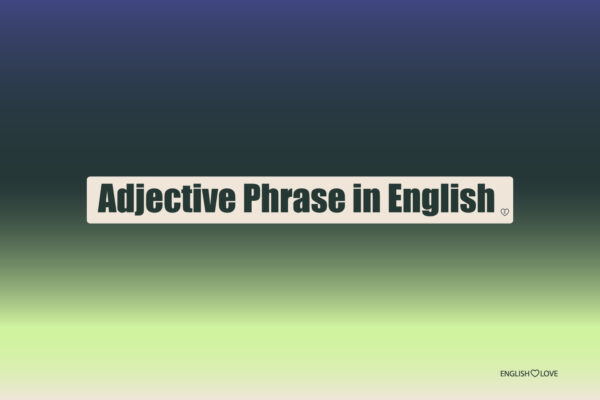Contractions are a fascinating aspect of the English language. They are formed by merging two or more words into a shorter version, typically using an apostrophe. For instance, the words “can not” and “I have” become “can’t” and “I’ve” respectively. Contractions are not just a linguistic shortcut; they play a vital role in making writing and speech more concise. However, their usage is governed by certain rules, especially in formal contexts where they might be deemed inappropriate.
What are Contractions?
Contractions are linguistic shortcuts in the English language that combine two or more words into a single word, resulting in a shorter form. This combination usually involves omitting certain letters and replacing them with an apostrophe. For example, the words “do” and “not” can be combined to form the contraction “don’t.” Similarly, “will” and “not” become “won’t.”
Contractions are particularly useful because they:
- Facilitate Fluent Speech: They allow for smoother transitions between words, making speech sound more natural and fluid.
- Enhance Informal Communication: Contractions are commonly used in casual conversations, making dialogues sound friendlier and more relaxed.
- Save Time in Writing: Especially in informal writing, contractions can make sentences shorter and more to the point.
When do you use Contractions?
The use of contractions is largely determined by the tone and context of the communication. Here’s when you might consider using them:
- Informal Writing and Conversations: Contractions are a staple in informal communications. This includes personal emails, text messages, casual letters, and everyday conversations. They give a relaxed and friendly tone to the dialogue.
- Dialogue in Literature: Authors often use contractions in dialogues to make characters sound more realistic and relatable. It helps in portraying a natural conversation flow.
- Advertisements and Marketing: In marketing materials and advertisements, space is often limited, and the message needs to be concise. Contractions can help convey the message quickly and in a friendly manner.
- Notes and Annotations: When jotting down quick notes or making annotations, contractions can save time and space.
However, there are situations where contractions might not be appropriate:
- Formal Writing: In academic papers, official reports, business correspondence, and other formal documents, it’s generally advised to avoid contractions to maintain a professional and formal tone.
- Legal Documents: Clarity is paramount in legal documents. To avoid any ambiguity, it’s recommended to use full words instead of contractions.
- Journalistic Writing: While some journalistic styles allow for contractions, especially in opinion pieces or editorials, news reports typically use a more formal tone, avoiding contractions.
- Public Speaking: Depending on the audience and the nature of the event, speakers might choose to avoid contractions to sound more authoritative and clear.
Types of Common Contractions
Negative Contractions
These contractions are formed by combining a verb with the word “not.”
List of Negative Contractions:
- can’t (cannot)
- won’t (will not)
- isn’t (is not)
- aren’t (are not)
- didn’t (did not)
- hasn’t (has not)
- haven’t (have not)
Table of Negative Contractions:
| Contraction | Full Form |
|---|---|
| can’t | cannot |
| won’t | will not |
| isn’t | is not |
| aren’t | are not |
| didn’t | did not |
| hasn’t | has not |
| haven’t | have not |
Pronoun + Verb Contractions
These contractions are formed by combining a pronoun with a verb.
List of Pronoun + Verb Contractions:
- I’m (I am)
- she’s (she is or she has)
- he’ll (he will)
- they’ve (they have)
- we’d (we had or we would)
Table of Pronoun + Verb Contractions:
| Contraction | Full Form |
|---|---|
| I’m | I am |
| she’s | she is/she has |
| he’ll | he will |
| they’ve | they have |
| we’d | we had/we would |
Verb + Not Contractions
These contractions are formed by combining a verb with the word “not.”
List of Verb + Not Contractions:
- doesn’t (does not)
- hadn’t (had not)
- wouldn’t (would not)
Table of Verb + Not Contractions:
| Contraction | Full Form |
|---|---|
| doesn’t | does not |
| hadn’t | had not |
| wouldn’t | would not |
Common Mistakes
- Incorrect Apostrophe Placement:
- Wrong: cant, wont, youre
- Right: can’t, won’t, you’re
- Confusing “It’s” and “Its”:
- “It’s” is a contraction for “it is” or “it has.”
- “Its” is a possessive pronoun.
- Using Contractions in Formal Writing:
- Avoid using contractions in academic papers, official reports, and other formal documents.
- Mixing Up “Who’s” and “Whose”:
- “Who’s” is a contraction for “who is” or “who has.”
- “Whose” is a possessive pronoun.
- Creating Non-Existent Contractions:
- Examples: “could of” instead of “could’ve” (for “could have”) or “should of” instead of “should’ve” (for “should have”).
- Misusing “Ain’t”:
- While “ain’t” is used in informal speech, it’s often considered non-standard and should be used cautiously in writing.
- Confusing “They’re,” “Their,” and “There”:
- “They’re” is a contraction for “they are.”
- “Their” is a possessive pronoun.
- “There” refers to a place or position.
- Overusing Double Contractions:
- While double contractions like “I’d’ve” (I would have) are used in informal speech, they can be confusing and are best avoided in writing.
- Using Contractions with Ambiguous Meanings:
- “I’d” can mean both “I had” and “I would.” Ensure the context makes the meaning clear.
- Avoiding Contractions Entirely in Informal Settings:
- While it’s essential to be cautious with contractions in formal writing, avoiding them entirely in casual conversations or informal writing can make the language sound stilted and unnatural.
FAQs on Contractions
What are contractions in English?
Contractions are shortened forms of two or more words combined into one, typically using an apostrophe. Examples include cant for cannot and Im for I am.
When should I avoid using contractions?
Contractions should generally be avoided in formal writing contexts, such as academic papers, official reports, and business correspondence. They might be deemed unprofessional or informal in such settings.
Whats the difference between its and its?
Its is a contraction representing it is or it has. In contrast, its is a possessive pronoun used to indicate ownership or association, similar to his or her.
Are double contractions like Idve acceptable in writing?
While double contractions like Idve (I would have) are used in informal speech, they can be confusing and are best avoided in formal writing. However, they might appear in dialogues or casual conversations in literature.




